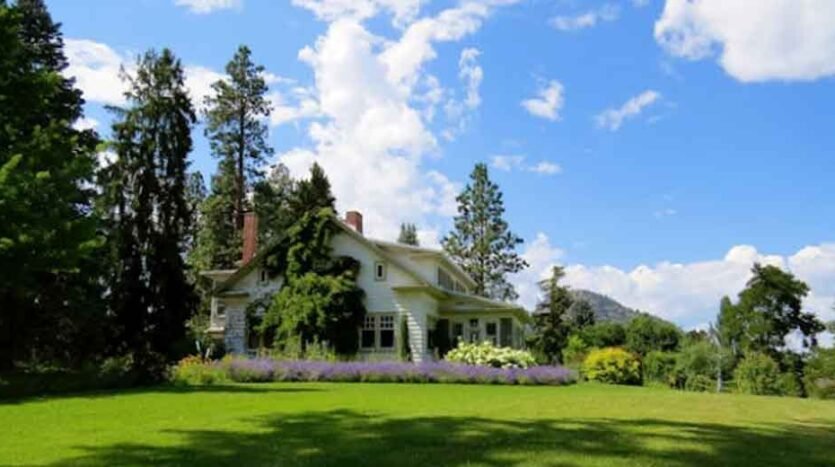The Essential Low-Maintenance Landscaping Checklist
Any outdoor area may be turned into an inviting retreat with well-designed landscaping, but keeping it lush and lovely shouldn’t mean endless upkeep. Good landscaping decisions improve curb appeal and utility while lowering maintenance. Selecting smart plants, robust hardscaping, and water-efficient solutions guarantees a colorful yard with minimal effort. Using sustainable methods that save time and money means working with nature rather than against it in a low-maintenance landscape. With the correct strategy, you can create an amazing, hassle-free outdoor area that looks great all year long.
Choosing the Right Plants for Effortless Beauty
Choosing robust, drought-tolerant plants cuts most of the work required in conventional landscaping. Native plants need less water, fertilizer, and insect control as they flourish in local circumstances. Without regular replowing, perennials offer year-round color and structure. Evergreen shrubs and ornamental grasses add texture and movement while being low maintenance. Deeply rooted plants establish themselves quickly and thus become resilient to changing conditions. Grouping plants with water and sunlight requirements helps to simplify maintenance and encourages healthier growth. Mulching around plants helps to control weeds, hold moisture, and lower soil erosion. This strategic plant selection creates a landscape that calls for little maintenance while still looking vibrant and well-maintained.
Implementing Smart Irrigation for Water Efficiency
A carefully thought-out irrigation system guarantees that plants get enough moisture without being overwatered. By bringing water straight to the root zone, drip irrigation reduces runoff and evaporation. For garden beds and foundation plantings, soaker hoses are, therefore, perfect since they offer constant watering and reduce waste. Rain sensors and timers help to further maximize watering schedules by varying depending on the weather. By including drought-resistant plants, gravel beds, and permeable surfaces, xeriscaping methods cut reliance on watering. Gathering rainwater in barrels helps gardens have a sustainable water source, therefore lessening their reliance on municipal water supplies. In addition to resource conservation, careful irrigation design reduces the time required to handle watering requirements.
Using Hardscaping for Long-Term Durability
Including hardscaping components produces an aesthetically pleasing, low-maintenance outdoor area that is lovely and useful all year long. Stone borders, gravel beds, and paved paths define areas and help greatly ease maintenance by lowering the need for mowing and trimming. To ensure long-term performance, materials, including concrete pavers, natural stone, and composite decking, provide durability without calling for regular repairs, sealing, or refinishing. Retaining walls and raised garden beds not only provide the landscape structure and depth but also help with drainage, erosion prevention, and soil stability enhancement for better growth of plants. Effective suppression of weed growth, enhanced water absorption, and a pleasing, useful substitute for high-maintenance lawns are achieved by gravel or mulch pathways. Well-positioned hardscaping improves the general look of the landscape and reduces maintenance time.
Designing a Lawn That Requires Minimal Upkeep
While improving the general look of outdoor areas, reducing lawn size or substituting low-maintenance alternatives greatly reduces upkeep. Ideal for sustainable landscaping, ground coverings, including clover, creeping thyme, or moss, offer vivid greenery without requiring regular mowing, fertilizing, or heavy watering. Artificial grass removes concerns about weeds, pests, or seasonal dieback by providing a continually lush, manicured look with almost no maintenance. Choosing slow-growing or drought-resistant types of grass can help people who prefer natural grass maintain a healthy lawn while requiring less watering and mowing. Edging lawns helps to keep clean, defined boundaries by preventing grass from invading garden beds and so lessening the need for regular trimming. Strategic lawn design minimizes maintenance effort and time while still producing a professional appearance.
Enhancing Privacy and Structure with Low-Maintenance Greenery
Incorporating low-maintenance natural elements into a landscape enhances its beauty and functionality. Without regular pruning, slow-growing trees with deep roots offer wind protection and shade. Decorative hedges provide natural privacy screens while adding structure to an outdoor space. Selecting drought-tolerant and pest-resistant cultivars guarantees long-lasting appeal with little maintenance. Using vertical gardening methods—such as trellises with climbing plants—offers green coverage without taking up excessive space. Shrubs and ornamental grasses soften hardscaping elements and define boundaries. These deliberate placements reduce the need for rigorous garden maintenance and offer year-round interest.
Conclusion
A well-planned, low-maintenance landscape strikes a mix between sustainability, utility, and beauty. Thoughtful plant selection, effective watering, sturdy hardscaping, and useful lawn substitutes all help to create a pleasing outdoor environment with minimal effort. Smart landscaping techniques help you to create a vibrant landscape that stays aesthetically pleasing without continual maintenance. Long-term success depends on investing in a landscape that works with rather than against nature, therefore enabling you to enjoy a beautiful, stress-free yard for years to come.


